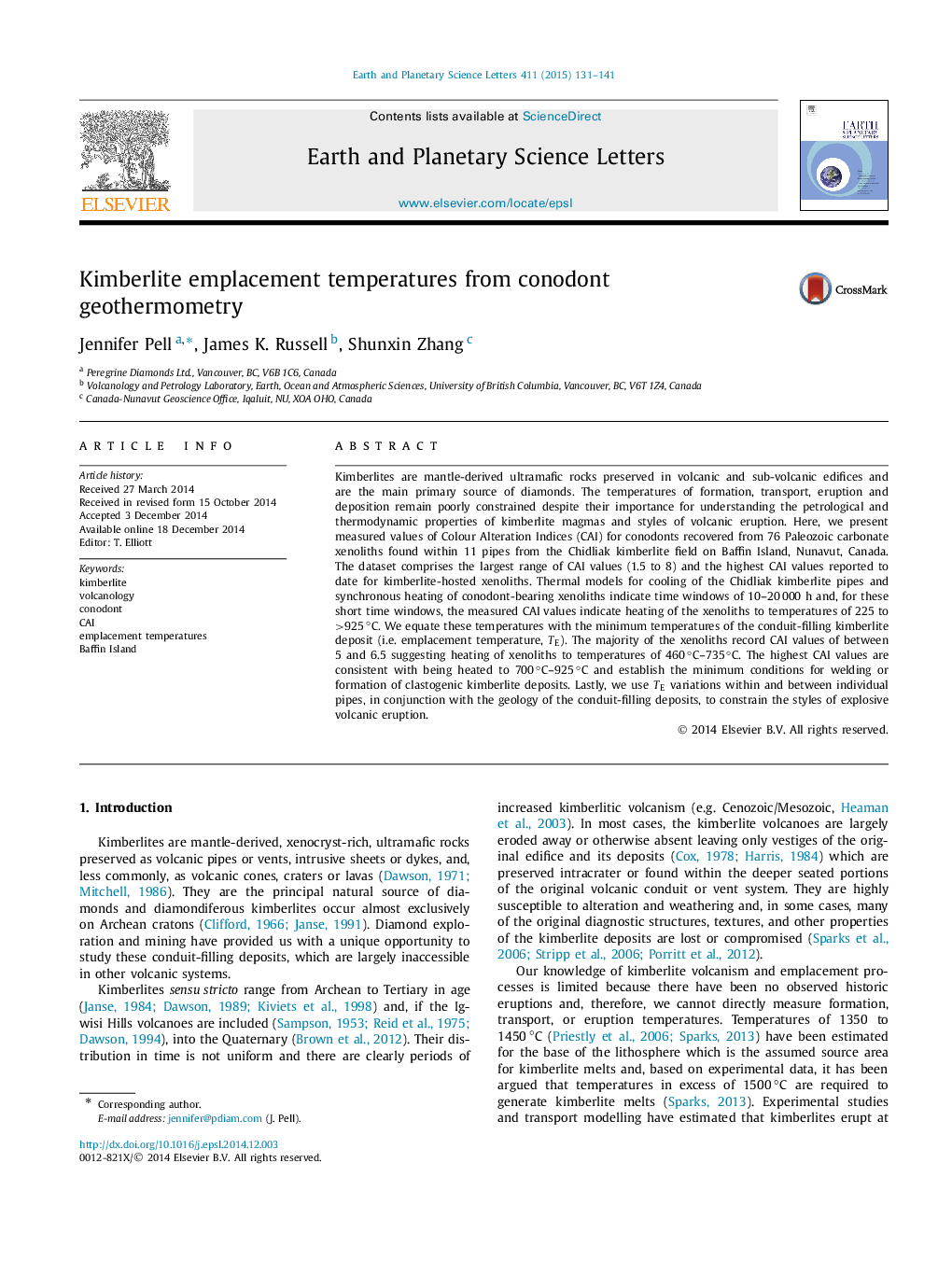| کد مقاله | کد نشریه | سال انتشار | مقاله انگلیسی | نسخه تمام متن |
|---|---|---|---|---|
| 6428414 | 1634745 | 2015 | 11 صفحه PDF | دانلود رایگان |

- Conodont Alteration Indices (CAI) inform on kimberlite emplacement temperatures (TE).
- Short timescales of kimberlite/xenolith cooling/heating indicate TE up to â¼925â°C
- Agglutination (welding, sintering) occurs in kimberlites emplaced at or above 700â°C.
- TE values indicate deposition from hot fire fountains and/or cooler, dilute plumes.
Kimberlites are mantle-derived ultramafic rocks preserved in volcanic and sub-volcanic edifices and are the main primary source of diamonds. The temperatures of formation, transport, eruption and deposition remain poorly constrained despite their importance for understanding the petrological and thermodynamic properties of kimberlite magmas and styles of volcanic eruption. Here, we present measured values of Colour Alteration Indices (CAI) for conodonts recovered from 76 Paleozoic carbonate xenoliths found within 11 pipes from the Chidliak kimberlite field on Baffin Island, Nunavut, Canada. The dataset comprises the largest range of CAI values (1.5 to 8) and the highest CAI values reported to date for kimberlite-hosted xenoliths. Thermal models for cooling of the Chidliak kimberlite pipes and synchronous heating of conodont-bearing xenoliths indicate time windows of 10-20â000 h and, for these short time windows, the measured CAI values indicate heating of the xenoliths to temperatures of 225 to >925â°C. We equate these temperatures with the minimum temperatures of the conduit-filling kimberlite deposit (i.e. emplacement temperature, TE). The majority of the xenoliths record CAI values of between 5 and 6.5 suggesting heating of xenoliths to temperatures of 460â°C-735â°C. The highest CAI values are consistent with being heated to 700â°C-925â°C and establish the minimum conditions for welding or formation of clastogenic kimberlite deposits. Lastly, we use TE variations within and between individual pipes, in conjunction with the geology of the conduit-filling deposits, to constrain the styles of explosive volcanic eruption.
Journal: Earth and Planetary Science Letters - Volume 411, 1 February 2015, Pages 131-141